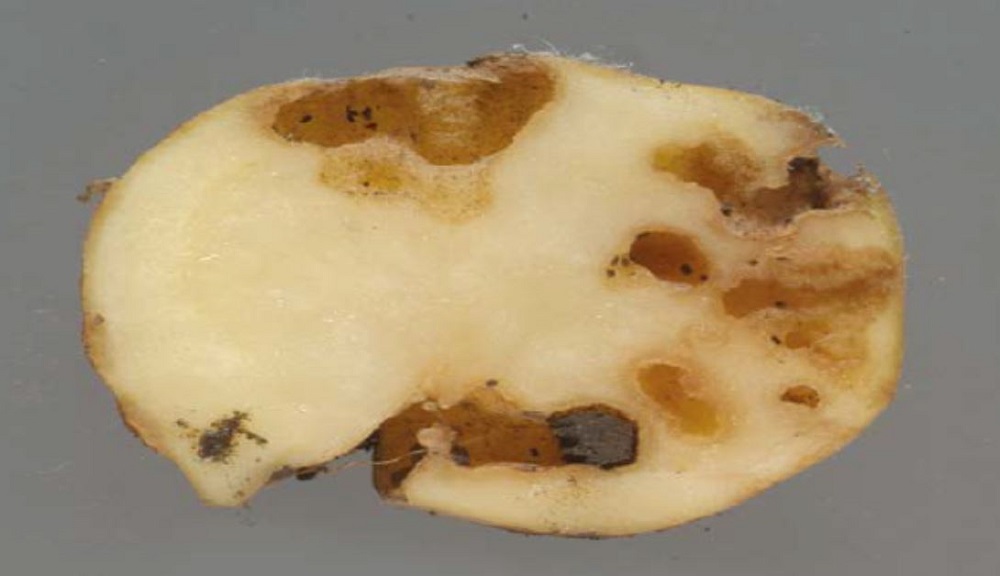- Home
- Knowledge library
- How do slugs damage crops?
How do slugs damage crops?
Slugs are a primary pest in many field crops, affecting both yield and quality. The impact depends on the size and activity of the population, as well as the crop and its growth stage.
How to manage slugs in field crops (home page)
Order a printed copy of our integrated slug control publication
Slugs grow and reproduce more rapidly when it is mild and moist. Such conditions prevail in the spring and early autumn. During these times of year, crops are often young, with more of the soft, nutritious tissue that slugs prefer. Anything that slows crop growth during this period – such as a lack of nutrients, poor soil conditions and weed competition, increases the period in which the crop is vulnerable to attack. At later growth stages, feeding can lead to cosmetic damage – this is a particular issue for high-value horticultural crops.
Slug damage in cereals
Slugs eat and hollow out cereal seeds. Barley and oat seeds have an extra seed coat, so are less vulnerable to attack than wheat. As each slug can kill up to 50 seeds in the first week after sowing, immediate control is necessary. Weight-for-weight, smaller slugs destroy more seeds than larger slugs.
Shoots and leaves of all cereal crops are also vulnerable. A crop is most sensitive up to growth stage 14 (four leaves unfolded) and remains vulnerable up to growth stage 21 (one main shoot and one tiller). Autumn-sown crops are slower growing and more at risk than spring-sown crops.
Slug damage in oilseed rape
Seedlings are most vulnerable to slugs. This is because, unlike cereals, the growing point of a germinating oilseed rape shoot is above ground. Serious damage occurs up to the four true-leaf stage.
Slug damage in potatoes
Slugs are most damaging at the early stages of tuber bulking. They enter through small holes in the skin and cause irregular-shaped holes on the tuber surface. These can extend into large cavities in the tuber. This also provides an entry point for fungal pathogens. Although there is variation in susceptibility to slug damage between potato varieties, there are no independent variety resistance ratings available.
Slug damage in horticultural crops (vegetables)
Various vegetable crops are susceptible to slugs. Celery, carrots, asparagus, long-season brassicas (e.g. Brussels sprouts and cabbage), lettuce and spinach tend to be the most susceptible. Early planted crops (e.g. lettuce and salad crops) are especially vulnerable.
Slugs can damage crops at varying stages. Direct feeding on seedlings can result in plant loss. At later stages, feeding can lead to cosmetic problems. The tolerance to feeding damage varies from zero (e.g. in salad crops) to small permitted tolerances (e.g. Brussels sprouts). Slug feeding can also contort the growing tip of some crops (e.g. asparagus) and cause rejections. Faecal and slime contamination, as well as the presence of live or dead slugs, can also make mature crops unmarketable or lead to rejections.
 Fera
Fera

